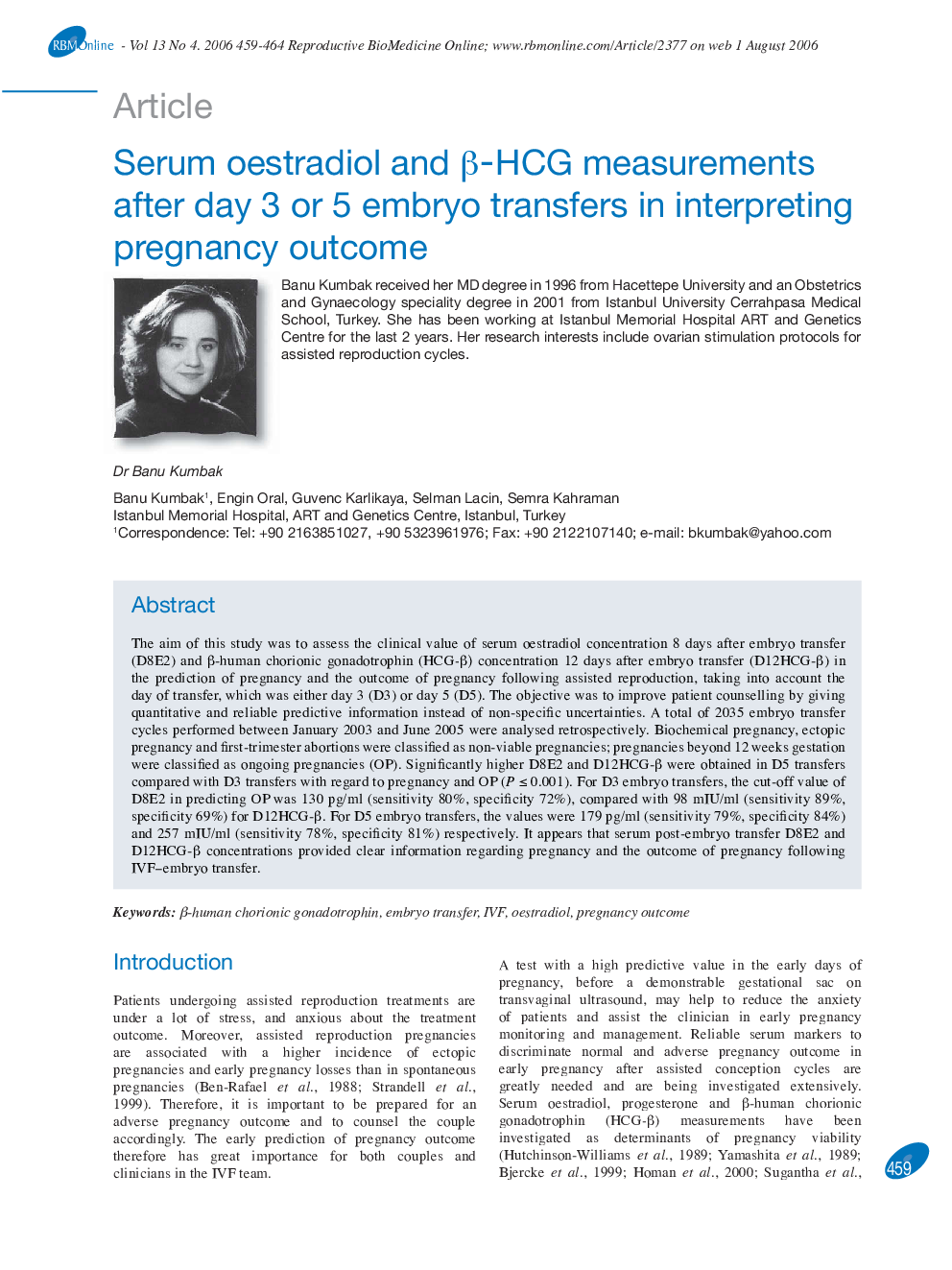| Article ID | Journal | Published Year | Pages | File Type |
|---|---|---|---|---|
| 3973431 | Reproductive BioMedicine Online | 2006 | 6 Pages |
The aim of this study was to assess the clinical value of serum oestradiol concentration 8 days after embryo transfer (D8E2) and β-human chorionic gonadotrophin (HCG-β) concentration 12 days after embryo transfer (D12HCG-β) in the prediction of pregnancy and the outcome of pregnancy following assisted reproduction, taking into account the day of transfer, which was either day 3 (D3) or day 5 (D5). The objective was to improve patient counselling by giving quantitative and reliable predictive information instead of non-specific uncertainties. A total of 2035 embryo transfer cycles performed between January 2003 and June 2005 were analysed retrospectively. Biochemical pregnancy, ectopic pregnancy and first-trimester abortions were classified as non-viable pregnancies; pregnancies beyond 12 weeks gestation were classified as ongoing pregnancies (OP). Significantly higher D8E2 and D12HCG-β were obtained in D5 transfers compared with D3 transfers with regard to pregnancy and OP (P ≤ 0.001). For D3 embryo transfers, the cut-off value of D8E2 in predicting OP was 130 pg/ml (sensitivity 80%, specificity 72%), compared with 98 mIU/ml (sensitivity 89%, specificity 69%) for D12HCG-β. For D5 embryo transfers, the values were 179 pg/ml (sensitivity 79%, specificity 84%) and 257 mIU/ml (sensitivity 78%, specificity 81%) respectively. It appears that serum post-embryo transfer D8E2 and D12HCG-β concentrations provided clear information regarding pregnancy and the outcome of pregnancy following IVF–embryo transfer.
